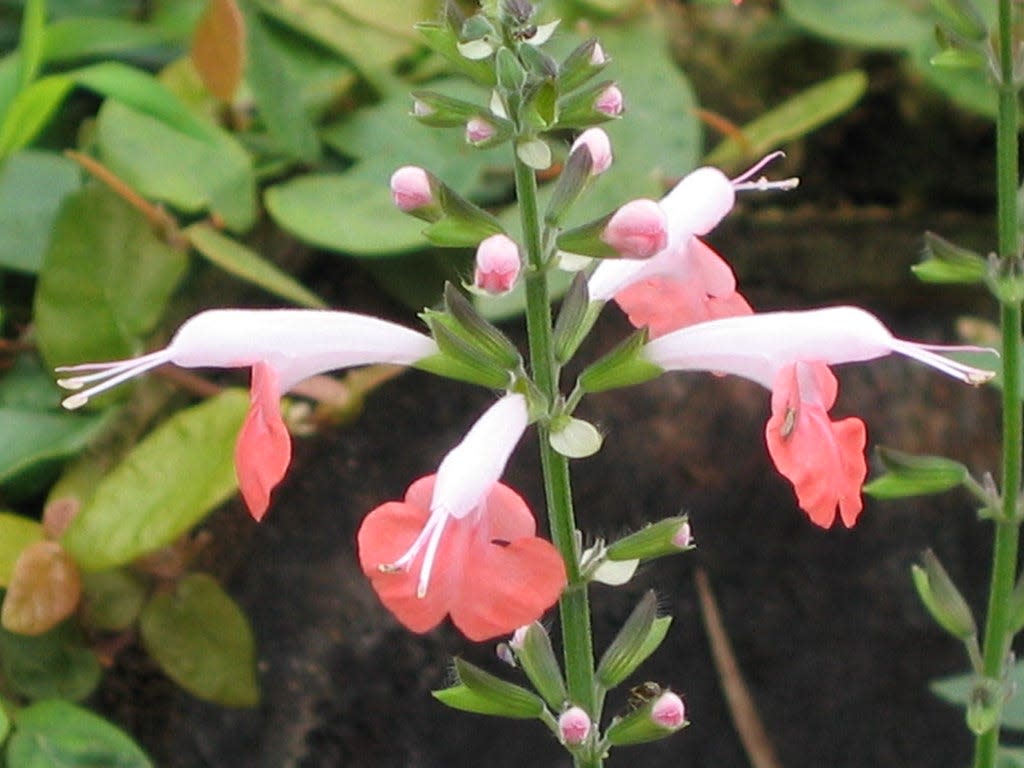CHARLES REYNOLDS: Tropical sage is the ultimate native perennial

Tropical sage (Salvia coccinea) grows in sun or moderate shade, drawing butterflies to its flowers year-round. Generally under 2 feet tall, but occasionally topping 4 feet, this adaptable, short-lived perennial manages to survive and bloom on non-irrigated sites. Its ease of propagation also makes it popular with gardeners, who can use seeds and cuttings or simply transplant volunteers. In fact, tropical sage reseeds freely, especially if not hard-pruned occasionally — a practice that encourages flowering but reduces self-sowing. In addition to the species’ standard red blossoms, forms with peach, pink, white and bicolored flowers are offered. Use tropical sage in masses, here-and-there for spots of color, and in containers.
ENDLESS PEPEROMIAS TO LOVE
Known as baby rubberplant, Peperomia obtusifolia is a semi-succulent native species that’s popular as a houseplant. It’s also a fine, fast-growing groundcover for shady sites in warmer locations of Central Florida. But indoor gardeners who love their baby rubberplants should consider branching out. Over 1,000 species of Peperomia are recognized from South and Central America, as well as Africa and Asia. In addition, an amazing number of hybrids are available, with most having beautifully variegated foliage, while others are heavily textured. Plants with leaves in shades of green or green and silver are common, as are green-and-gold varieties. My favorite is Peperomia Ginny, with eye-catching red-margined, green-and-cream foliage.
Peperomias — regardless of species or variety — are ideal houseplants: They grow best in bright, indirect light but tolerate low light. And due to their thick, succulent foliage, most endure neglectful irrigation. Fertilize twice annually with Osmocote Plus, and propagate with stem or leaf cuttings stuck in sphagnum moss or fibrous potting soil. Plants are available online.
BAD SIGN WHEN LEAVES HANG ON
I’m occasionally asked why the leaves on a deciduous shrub or tree turn brown but don’t fall. Unfortunately, it often means that the plant has died. If only a single branch is involved, the problem may be limited to that branch. But before chopping down a tree — or even pruning off a branch — check for living tissue by scraping off a patch of bark. If you see a thin bright-green layer (the cambium layer), it means the plant is alive and may recover.
GANGES PRIMROSE HAS WEEDY TENDENCIES
Also known by the euphonious name Coromandel — a region of India — Ganges primrose is a creeping herbaceous plant that grows 18 to 36 inches tall in sun or moderate shade. Native from India to Africa, and widely naturalized, the species (Asystasia gangetica) flaunts petunia-like blossoms most of the year, displaying white or yellow flowers that darken to purple. Ganges primrose not only spreads via rhizomes: it clambers up nearby shrubs — behavior that may distress neat-minded folks. But for very casual gardeners, this perennial seems heaven-sent because it’s low-maintenance and a reliable source of flowers.
This article originally appeared on The Ledger: Tropical sage is adaptable and reseeds freely

